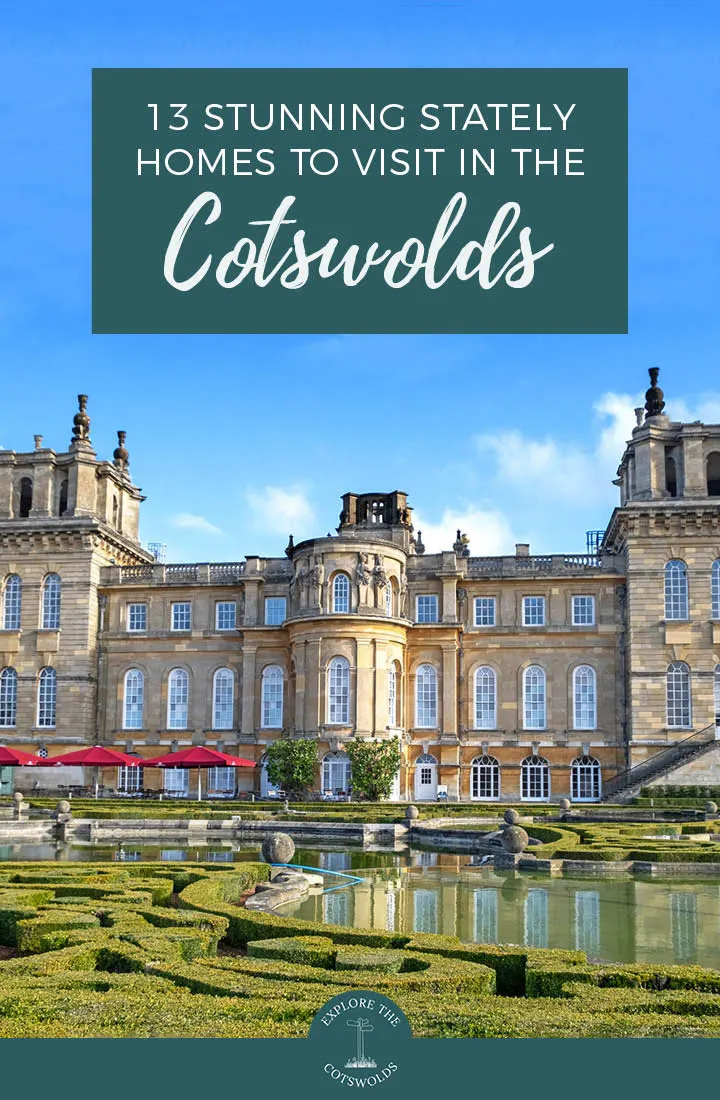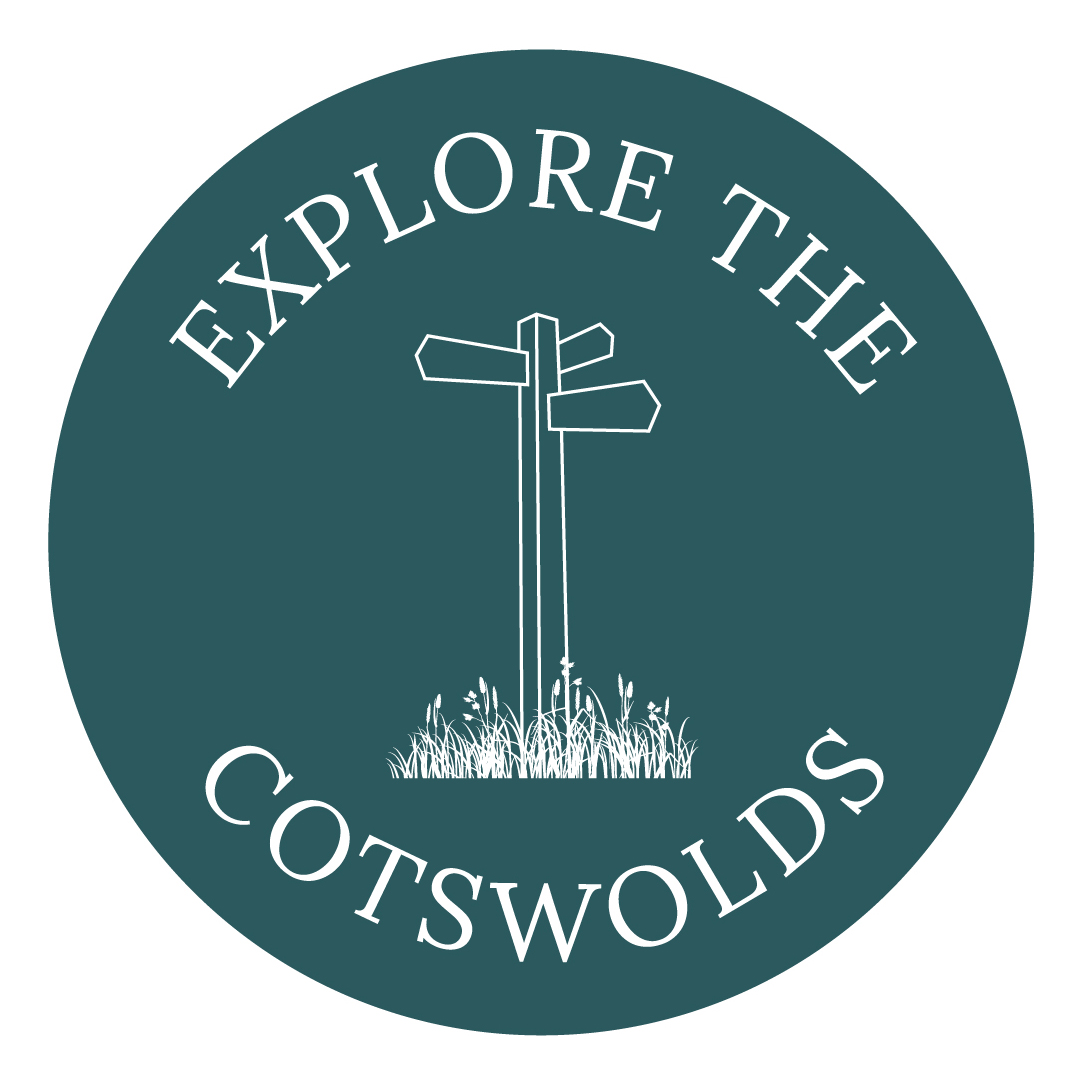The Cotswolds is famous for its natural beauty, but another of its big attractions is its history, and the region has some of the most impressive stately homes and historic houses in the country.
A stately home is defined as a large and impressive house with an interesting history and a grand interior decorated with artworks and antiques. And there are plenty of historic properties around the Cotswolds which fit the bill, from manor houses to castles and palaces – many of which have been used as filming locations for movies and TV shows – and you can go behind-the-scenes.
We’ve picked 13 of the best stately homes in the Cotswolds which you can visit. And at the end of the post there are suggestions for the best stately homes for families, dog-owners and more.
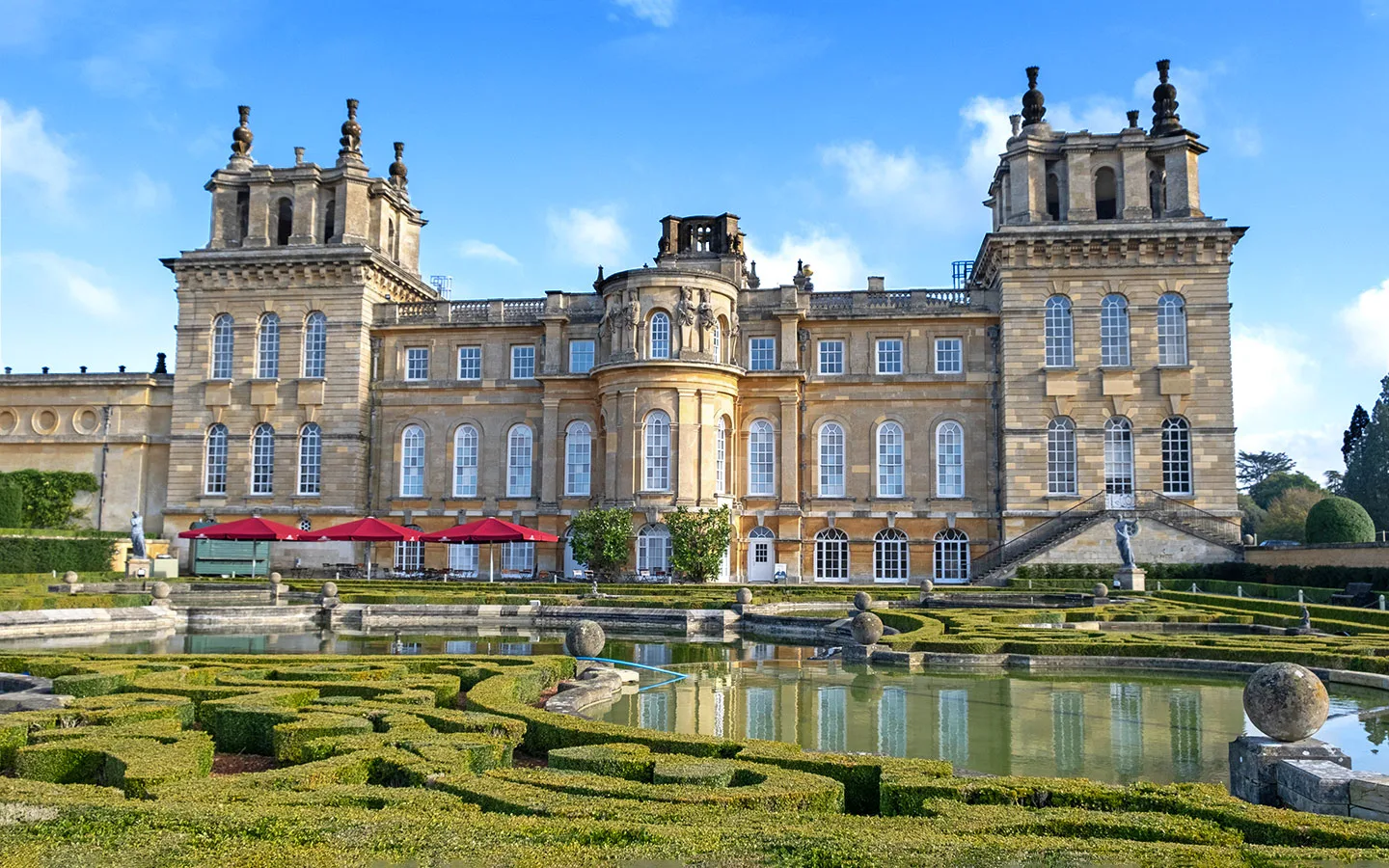
Visiting stately homes in the Cotswolds
We’ve only listed stately homes in the Cotswolds which are regularly open to the public. Note that most have seasonal opening hours, with closures or limited days in winter.
Some others – including Westonbirt House, Owlpen Manor and Chavenage House – also run occasional open days or offer private groups tours (check their websites for dates and details).
Many stately homes are part of heritage organisations. Some are owned by the National Trust. Others are independently owned but are members of the Historic Houses organisation. Members get free entry to the properties, and National Trust members get free car parking at their sites.
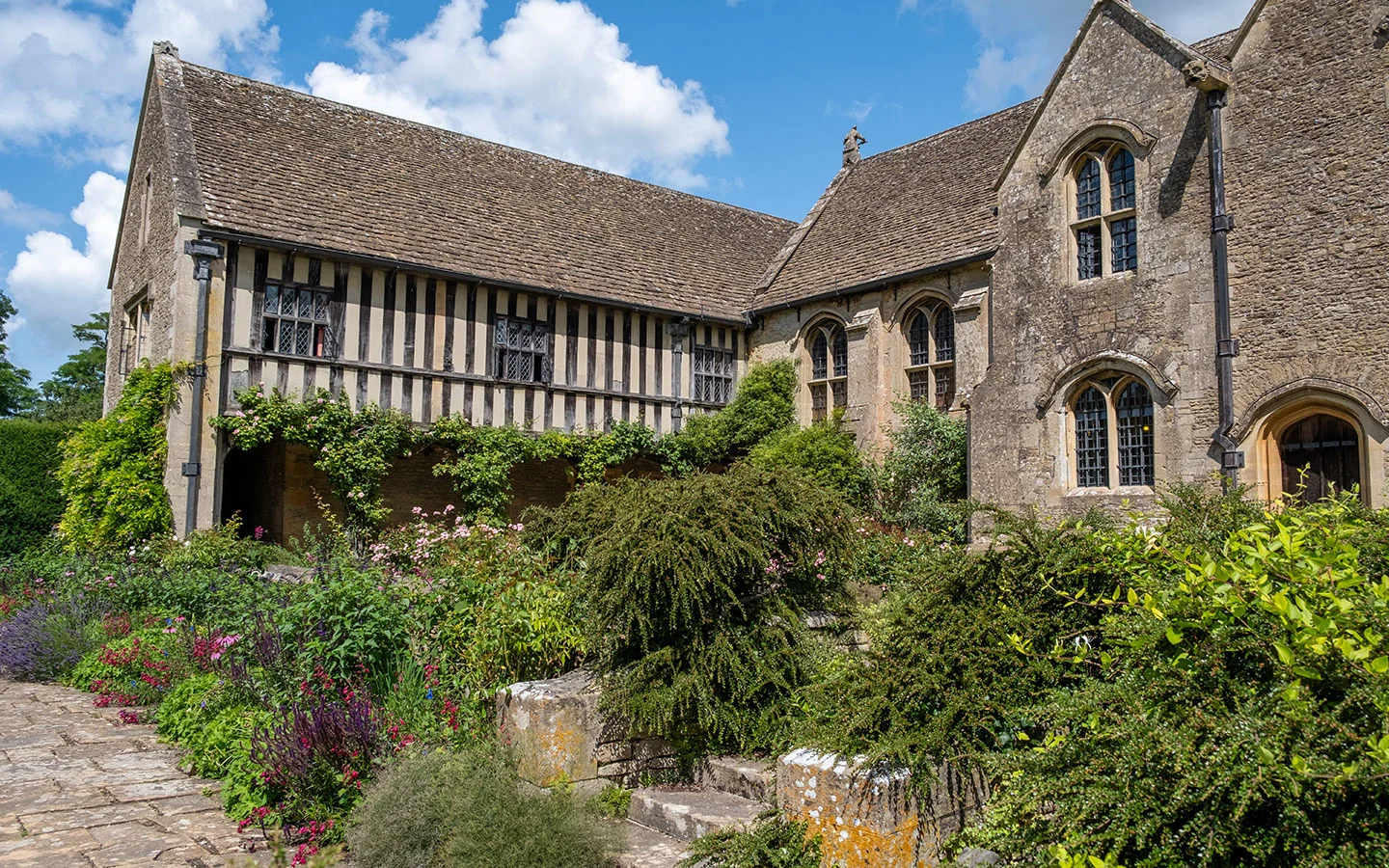
Annual adult membership of the National Trust costs £91 or for Historic Houses it costs £68, so it can be worth joining if you’re planning on visiting several stately homes in the Cotswolds within a year. We’ve listed which properties are members of which organisations below:
- National Trust: Snowshill Manor, Chastleton House, Newark Park, Dyrham Park, Great Chalfield Manor and Westwood Manor.
- Historic Houses: Sudeley Castle, Stanway House, Sezincote House, Kelmscott Manor, Rodmarton Manor and Corsham Court.
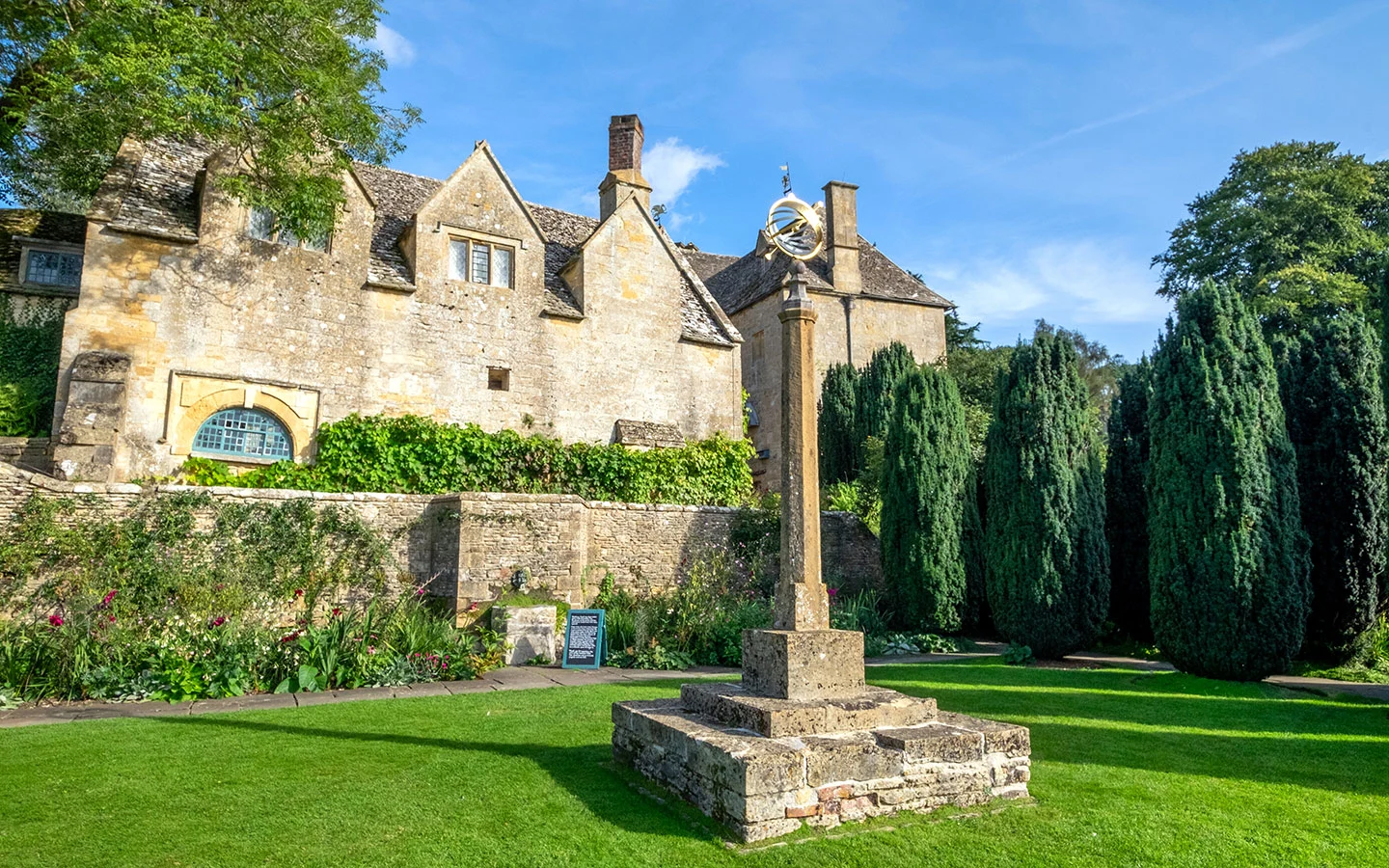
Map of stately homes in the Cotswolds

Blenheim Palace
Grandest of all the Cotswold stately homes is Blenheim Palace, which is also a UNESCO World Heritage site. This Baroque-style palace near Woodstock in Oxfordshire was built between 1705 and 1733 for John Churchill, the first Duke of Marlborough, and it’s still home to his descendants today. Sir Winston Churchill – grandson of the 7th Duke – was also born in the palace in 1874.
You can take an audio tour of the palace state rooms, which are lavishly decorated with gold, marble, tapestries, antique furniture and artworks. There’s also an exhibition on Winston Churchill’s life, and 2000 acres of parkland and landscaped gardens. The palace hosts regular events, including an annual food festival, flower show, horse trials and a Christmas market and light trail.
Blenheim Palace is normally open daily year-round. Entry costs £38 adults/£22 children – Blenheim isn’t part of a heritage organisation but an annual pass is included for no extra cost.

Sudeley Castle
At Sudeley Castle, on the edge of Winchcombe, you can discover over 1000 years of history. It’s the only private castle in England with a queen buried in its grounds – Katherine Parr, the last of Henry VIII’s six wives, was laid to rest in St Mary’s Chapel. Today Sudeley is part ruined medieval castle and part opulent stately home, which is lived in by the Dent-Brocklehurst family.
Visitors can explore the 15th century west wing, where an exhibition shows off objects from across the castle’s history, from Roman statues to Victorian gloves. You can also add on a tour of the family’s private apartments and art collection. And there are 10 different gardens and 1200 acres of grounds, including an adventure playground, zip-wire and assault course for kids.
Sudeley Castle is normally open daily from April–October. Entry costs £19.50 adults/£8.75 children, or is free for Historic Houses members.
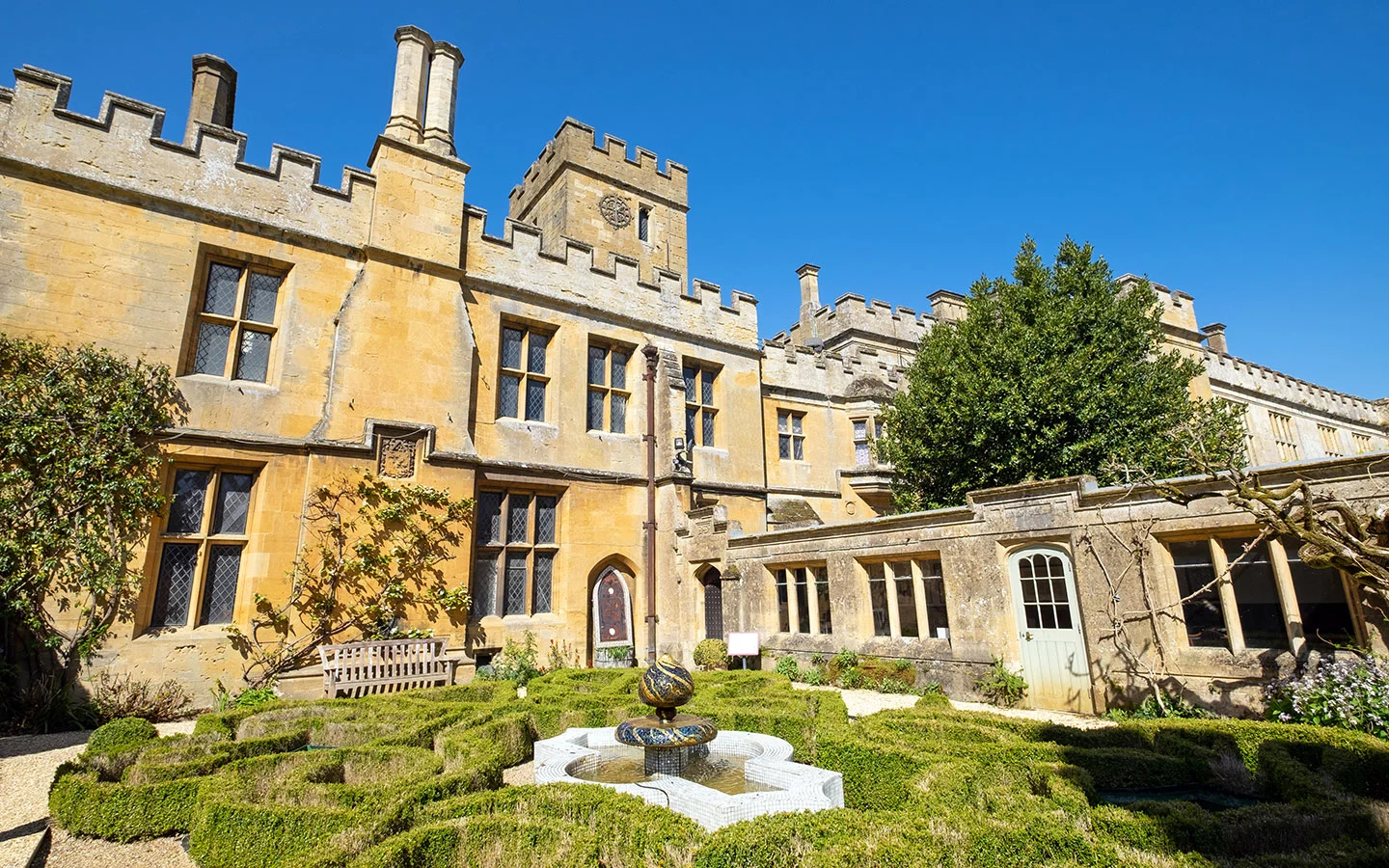
Snowshill Manor
Snowshill Manor is a charming 16th-century stately home in the Cotswolds village of Snowshill, known for its quirky collections. Edwardian architect and poet Charles Paget Wade bought Snowshill after the First World War and renovated it as a home for his extensive collections of over 20,000 objects, from Samurai armour to model ships, all of which he though showed good design.
Wade donated the house to the National Trust before he died, and his collections are spread through it, with each room having a different theme. You can also visit the adjacent Priest’s House where Wade lived, and explore the Arts and Crafts garden with its own model fishing village.
Snowshill Manor is open daily from March–October and at weekends only in November. Entry costs £14 adults/£7 children, or is free for National Trust members.
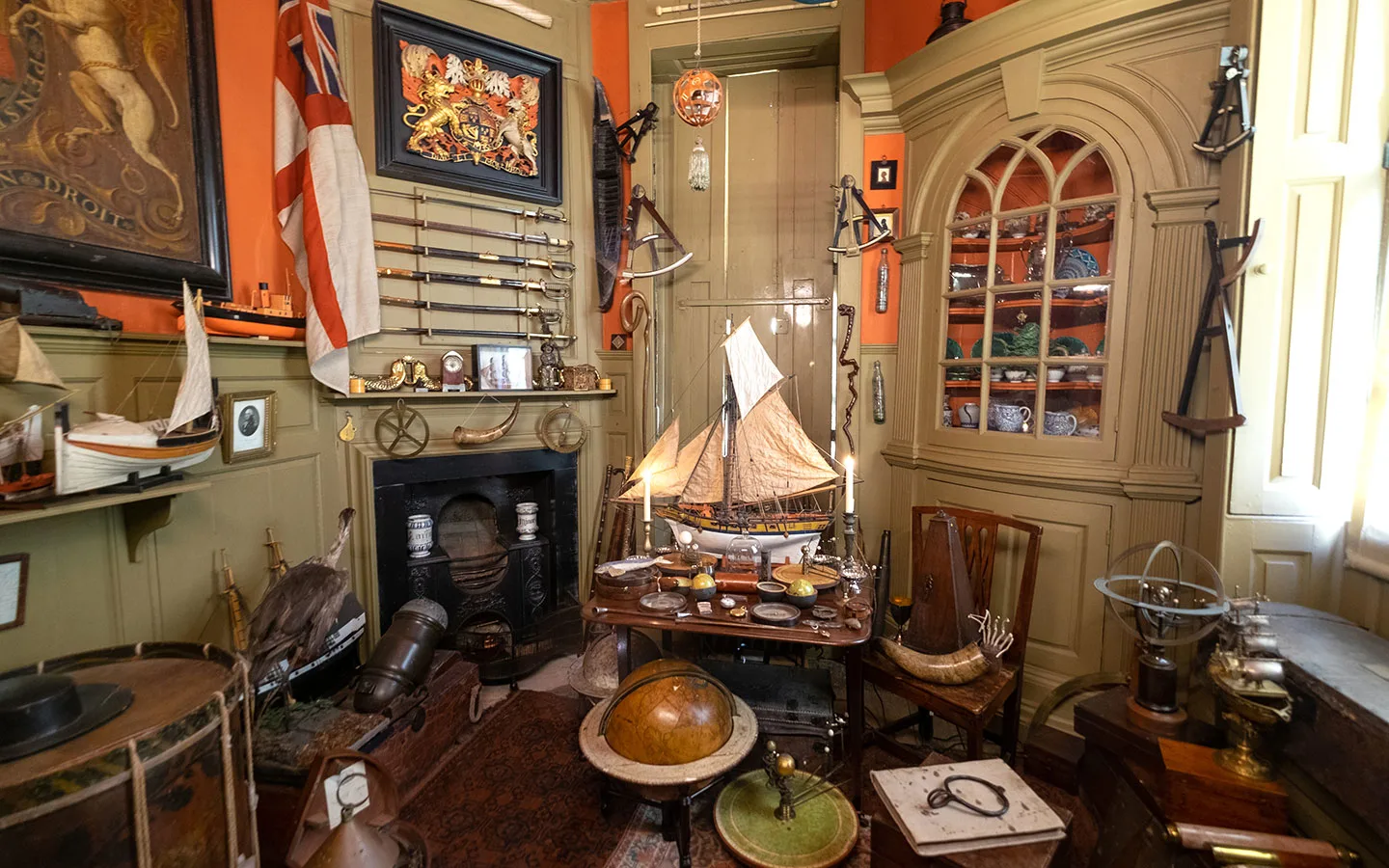
Stanway House
Stanway House lies along the route of the Cotswold Way, just south of Broadway. This Jacobean manor is built of local Guiting Yellow stone and was once owned by Tewkesbury Abbey. It’s been lived in by the Tracy family since the 16th century, so doesn’t have a stuffy, museum feel.
Its gardens are famous for their 300-foot-tall fountain, which is the highest gravity fountain in the world. But you can also take an audio tour around the house and admire its wood-panelled walls and antique furniture. There’s also a 14th-century Tithe Barn, a church and a cricket pitch where Peter Pan author JM Barrie, Arthur Conan Doyle, AA Milne and HG Wells all used to play.
Stanway House is open on Tuesdays and Thursdays from 2pm–5pm in June, July and August. Entry costs £11 adults/£8.50 concessions (cash only), or is free for Historic Houses members.
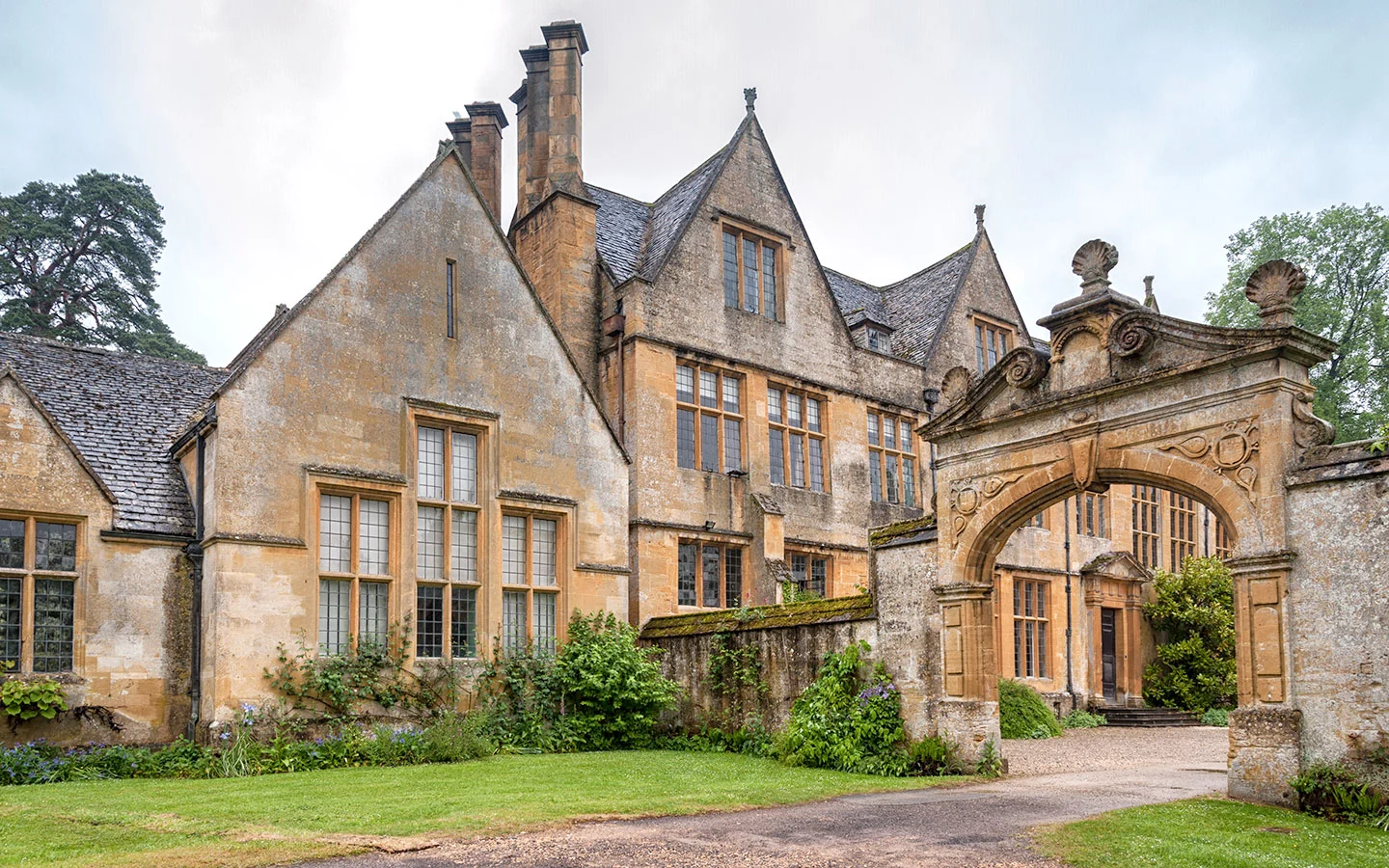
Sezincote House
Not your traditional English country house, Sezincote near Moreton-in-Marsh brings a taste of India to the Cotswolds. Sezincote was built in 1798 by Samuel Pepys Cockerell, who was inspired by the architecture of the Mogul palaces of Rajasthan, though he’d never actually been to India.
Inside the house is a traditional English stately home. But the exteriors mix Hindu and Islamic styles, with a copper onion dome on top of the house, minarets, a curving orangery and water gardens with fountains, a grotto and a temple to the Hindu Sun God. And it’s said to have influenced the design of the Royal Pavillion in Brighton after the Prince Regent visited in 1807.
Sezincote House is open on Wednesdays, Thursdays, Fridays and Bank Holidays Mondays from May–September. Entry costs £15 adults/£9 children, or is free for Historic Houses members (pre-booking is required for house tours).
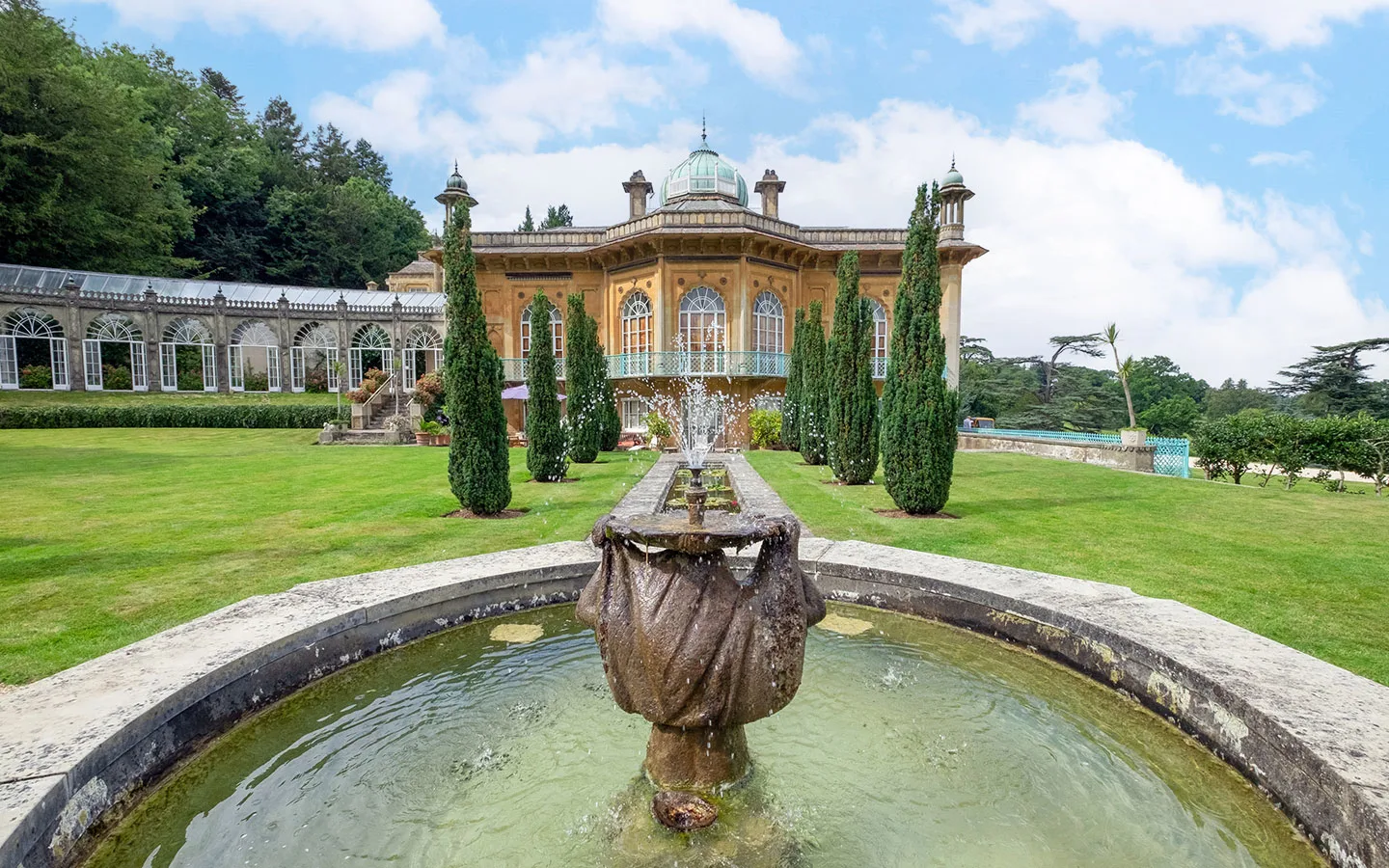
Chastleton House
Located east of Moreton-in-Marsh, Chastleton House is a Jacobean country house which was built for rich cloth merchant Walter Jones in the 1600s to show off his wealth and status. It was owned by his descendants for the next 400 years, but their fortunes declined over the years, and by the 1990s the house was in a decrepit state when it was taken over by the National Trust.
Since no improvements or repairs had been done for centuries, the house has kept its original features and the interiors are like stepping back in time. You can visit the family’s rooms upstairs and staff quarters downstairs, including the kitchens which were still in use until the 1950s.
Chastleton House is open 1pm–5pm on Wednesdays to Sundays from March–October. Entry costs £12 adults/£6 children, or is free for National Trust members.

Kelmscott Manor
Kelmscott Manor, on the banks of the River Thames near Lechlade to the southeast of the Cotswolds, was the countryside retreat of William Morris – Victorian designer, writer, artist and founder of the Arts and Crafts Movement. He described this 17th-century manor house and surrounding gardens as ‘heaven on earth’ for their unspoilt and unaltered natural beauty.
After Morris’ death his wife Jane bought the manor. Today it houses collections of furniture, tapestries, ceramics and paintings owned by William Morris and his family, and also by Pre-Raphaelite artist Dante Gabriel Rossetti, who rented Kelmscott with Morris in the 1870s.
Kelmscott Manor is open on Thursdays, Fridays and Saturdays from May–October. Entry costs £14.50 adults/£8.75 children, or free for Historic Houses members, and an annual pass is included.

Rodmarton Manor
Rodmarton Manor is another Cotswold stately home with a link to the Arts and Crafts Movement. It was designed by Ernest Barnsley around the time of the First World War, who followed William Morris in rejecting mass production in favour of traditional, hand-crafted workmanship.
The house took over 20 years to complete and is a treasure trove of Arts and Crafts design. You can see specially crafted furniture, ceramics, textiles and ironwork. Much of it was made by local Cotswolds craftspeople, including Ernest Barnsley’s furniture-maker brother Stanley. Rodmarton is also known for its Arts and Crafts-style garden, with lovely snowdrops in spring.
Rodmarton Manor is open 2pm–5pm on Wednesdays, Sundays and Bank Holiday Mondays from April–September. Entry costs £14 adults/£7 children, or is free for Historic Houses members.
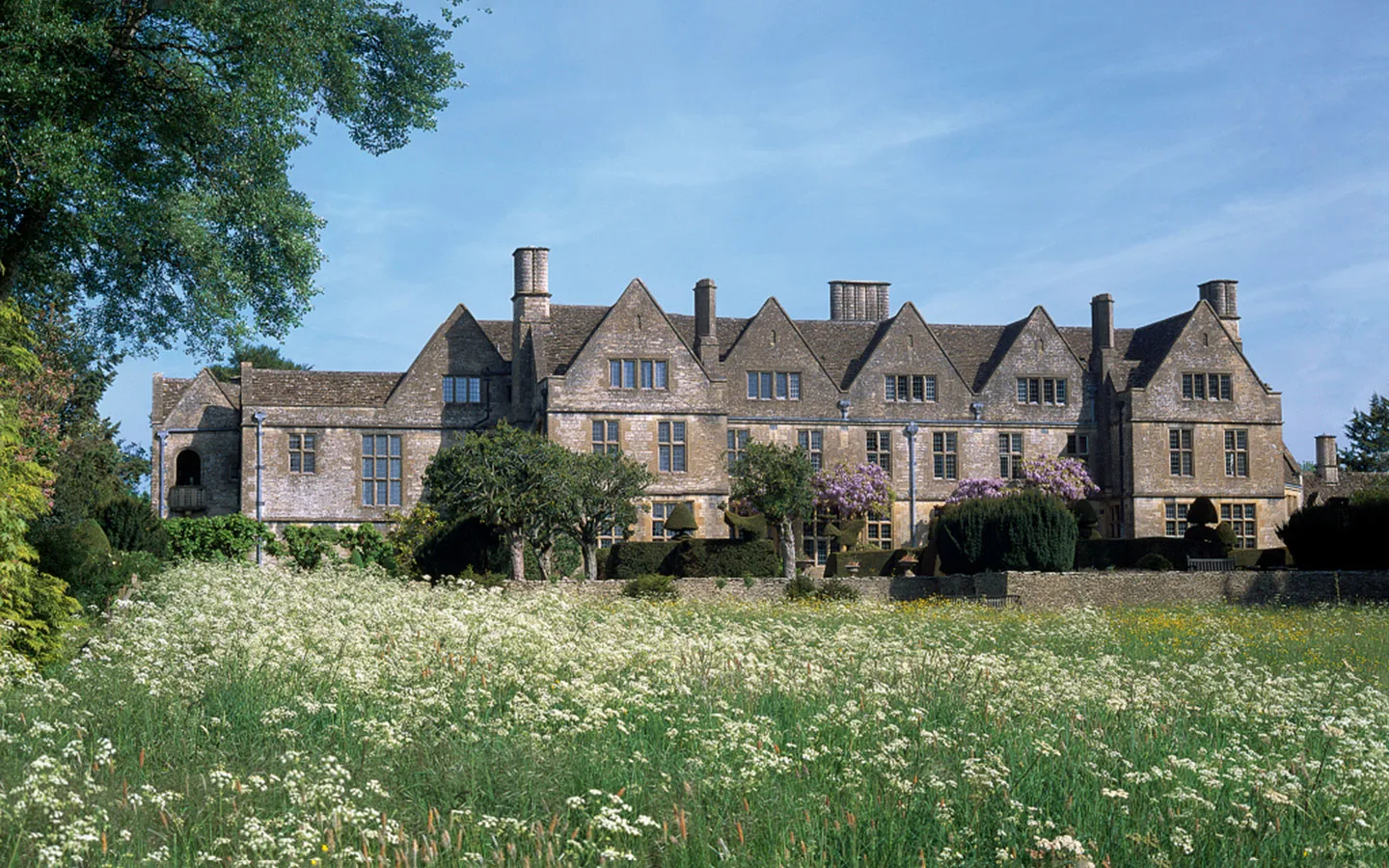
Newark Park
Newark Park near Wotton-under-Edge started life as a Tudor hunting lodge, which was built in 1550 by Sir Nicholas Poyntz, courtier to Henry VIII, to use for entertaining his guests. It was extended and remodelled over the next 400 years and eventually fell into decline.
Newark Park was rescued and lovingly renovated in the 1970s and 80s by a Texan architect. Today its interiors show off a mix of furniture and fittings from across its history, from the Tudors right up to the 20th century. Among the highlights are the stained-glass Clutterbuck Window and William Morris wallpaper – plus there are fantastic views out across the Cotswold countryside.
Newark Park is open daily 11am–4pm from February–October and at weekends only in November and December. Entry costs £12 adults/£6 children, or is free for National Trust members.

Dyrham Park
Dyrham Park is located north of Bath and was built in the late 17th century for English diplomat and politician William Blathwayt, on the site of an older Tudor House. It has one of the best-preserved Baroque interiors in the country, decorated with wood panelling, Dutch Delftware tiles and artworks, furniture and artefacts which Blathwayt collected on his travels around the world.
Its period charms have made it a popular film location, including for the 2021 adaptation of Nancy Mitford’s The Pursuit of Love. There are hands-on exhibits to touch, smell and listen to, the chance to dress up and create a 17th-century silhouette, and 270 acres of parkland to explore.
Dyrham Park is normally open daily, with access to the house from 11.30am–4pm. Entry costs £17 adults/£8.50 children, or is free for National Trust members.
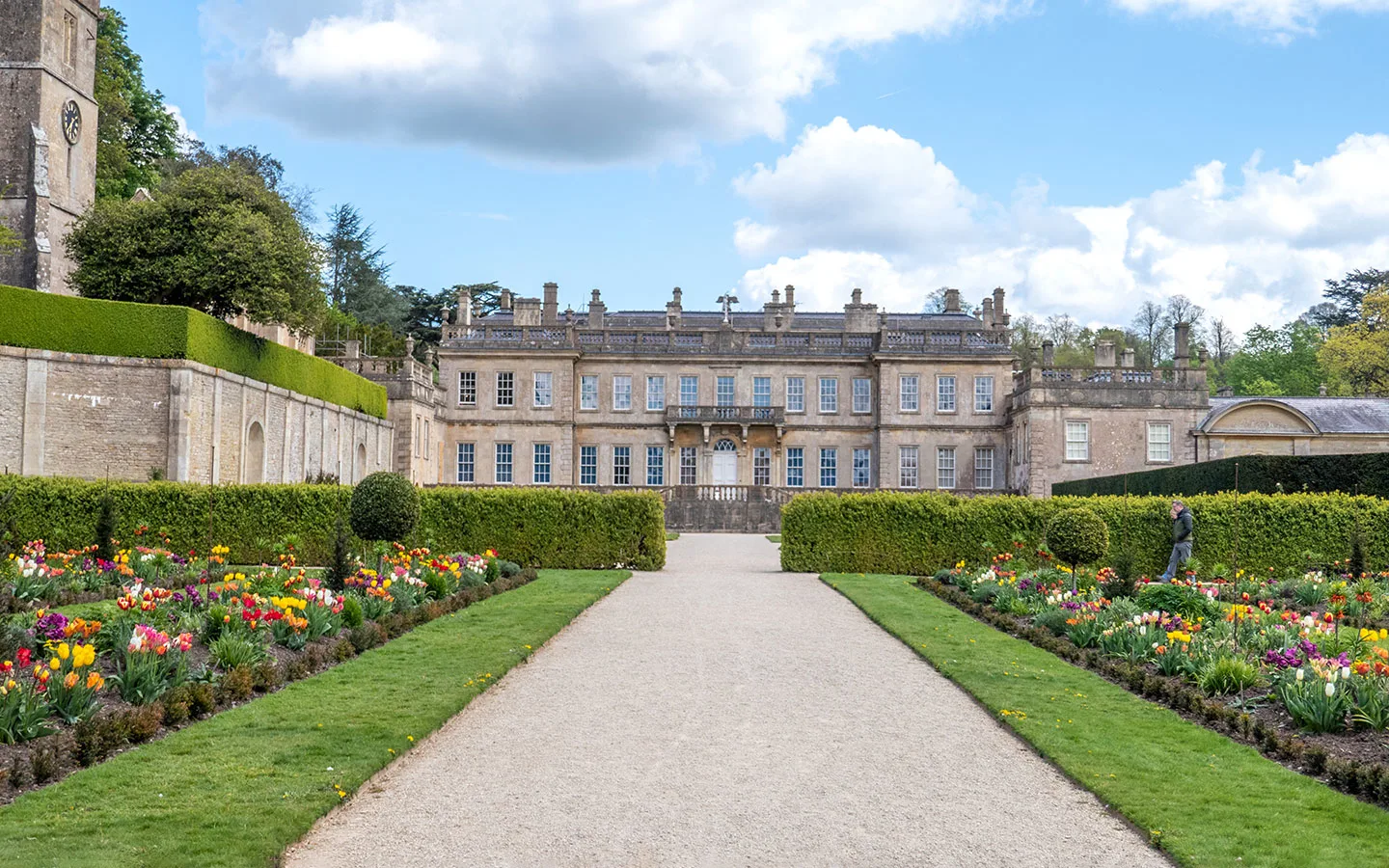
Corsham Court
The Corsham Estate has a royal pedigree – it started life as a palace for the Kings of Wessex and was then part of the dowry for Queens of England until the 16th century. The current Elizabethan manor was built in 1582, and was later surrounded by parkland designed by Capability Brown.
Today this stately home just south of the Cotswolds boundary has been the residence of the Methuen family for eight generations. The family were keen art collectors, and you can see some of their impressive collection on tours of the Picture Gallery, which has 16th and 17th century Dutch and Italian Masters on display as well as Chippendale furniture and damask wall hangings.
Corsham Court is open 2pm–4.30pm on weekends from October–mid-March (excluding December) and 2pm–5.30pm daily except Mondays and Fridays from mid-March–September. Entry costs £12.50 adults/£5 children, or is free for Historic Houses members.

Great Chalfield Manor
Great Chalfield Manor in Wiltshire is a classic storybook stately home, right down to the moat and gatehouse designed to protect it. It was built in the late 15th century and passed through a few different owners until it was bought and restored by Edwardian businessman Robert Fuller.
Fuller employed architect Sir Harold Brakspear who restored the manor as accurately as possible, adding oak furniture and Flemish tapestries. The Fuller family still live there today, so you can only visit the house as part of a 45-minute guided tour and photography isn’t permitted. Great Chalfield also has another Arts and Crafts-style garden and a pretty church in the grounds.
Great Chalfield Manor is normally open 11am–5pm on Tuesdays–Thursdays and Sundays from April–October. Entry £13 adults/£6.50 children, or is free for National Trust members.

Westwood Manor
National Trust property Westwood Manor, close to Bradford on Avon, is a traditional 15th-century stone manor house with plenty of period features. Although tenants live there to look after it, the manor is open to the public several afternoons a week so you can take a look around.
Its last owner Edgar Lister uncovered original wall panelling and plasterwork ceilings while restoring the house in the 1910s. And he filled it with Tudor and Jacobean furniture, antique tapestries and musical instruments, including the country’s earliest Italian keyboard from 1537.
Westwood Manor is open on Tuesdays, Wednesdays and Sundays 2pm–5pm from April–September. Entry costs £11 adults/£5.50 children, or is free for National Trust members.

Which is the best stately home in the Cotswolds…
For art lovers? You can see world-class artworks at Corsham Court and Blenheim Palace, or add on an additional tour at Sudeley Castle to see the Dent-Brocklehurt’s private art collection. There’s also Arts and Crafts design on display at Rodmarton Manor and Kelmscott Manor.
For dog owners? The most dog-friendly Cotswold stately home is Stanway House, with dogs on leads allowed in the house and gardens. Dogs are also allowed in the grounds at Blenheim Palace, Newark Park, Corsham Court and Kelmscott Manor (except in the walled garden).

For something different? Explore Charles Paget Wade’s diverse and unusual collections at Snowshill Manor, or visit the Indian-inspired Sezincote House and Gardens.
For families? Kids can dress up as a Tudor lord or lady at Newark Park, in 18th century costume at Snowshill Manor or make a silhouette at Dyrham Park. There’s also a childrens’ trail at Kelmscott Manor and play areas at Newark Park, Dyrham Park, Blenheim Palace and Sudeley Castle.
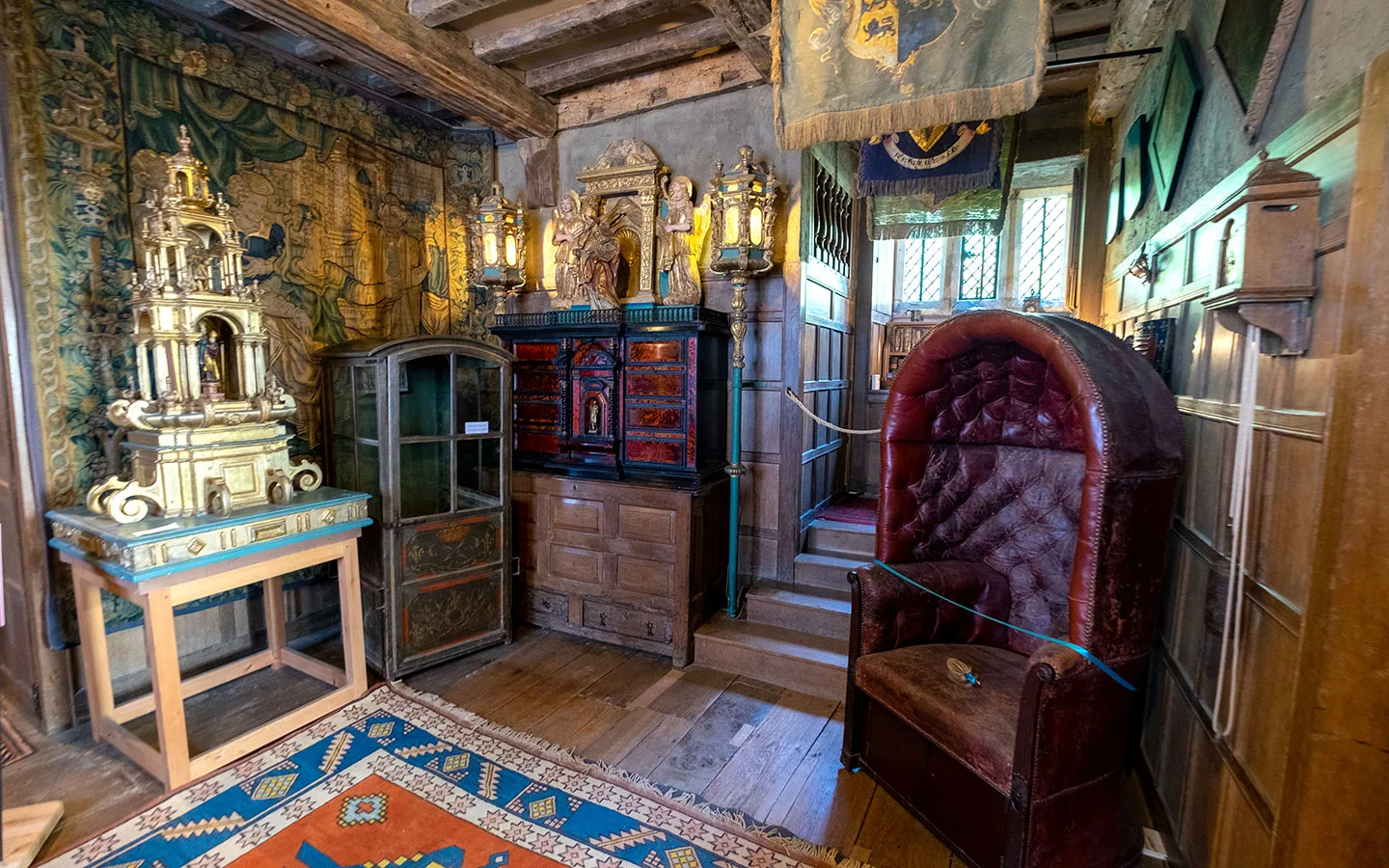
Save for later
